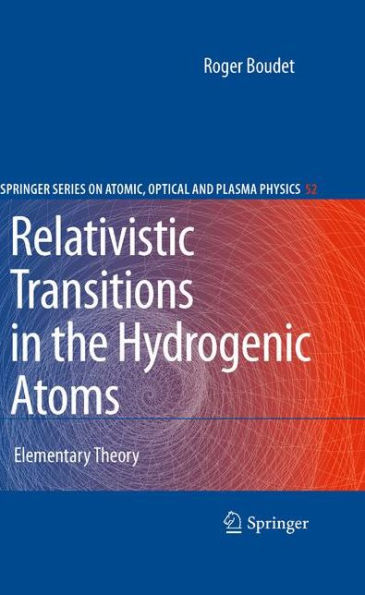Relativistic Transitions in the Hydrogenic Atoms: Elementary Theory
The aim of this volume is twofold. First, it is an attempt to simplify and clarify the relativistic theory of the hydrogen-like atoms. For this purpose we have used the mathematical formalism, introduced in the Dirac theory of the electron by David Hestenes, based on the use of the real Clifford algebra Cl(M) associated with the Minkwoski space–time M, that is, the euclidean 4 R space of signature (1,3). This algebra may be considered as the extension to this space of the theory of the Hamilton quaternions (which occupies an important place in the resolution of the Dirac equation for the central potential problem). The clarity comes from the real form given by D. Hestenes to the electron wavefunction that replaces, in a strict equivalence, the Diracspinor. This form is directly inscribed in the frame of the geometry of the Minkwoski space in which the experiments are necessarily placed. The simplicity derives from the unification of the language used to describe the mathematical objects of the theory and the data of the experiments. The mathematics concerning the definition and the use of the algebra Cl(M) are not very complicated. Anyone who knows what a vector space is will be able to understand the geometrical implications of this algebra. The lecture will be perhaps more difficult for the readers already acquainted with the complex formalism of the matrices and spinors, to the extent that the new language will appear different from the one that they have used. But the correspondence between the two formalisms is ensured in the text at each stage of the theory.
1101668861
Relativistic Transitions in the Hydrogenic Atoms: Elementary Theory
The aim of this volume is twofold. First, it is an attempt to simplify and clarify the relativistic theory of the hydrogen-like atoms. For this purpose we have used the mathematical formalism, introduced in the Dirac theory of the electron by David Hestenes, based on the use of the real Clifford algebra Cl(M) associated with the Minkwoski space–time M, that is, the euclidean 4 R space of signature (1,3). This algebra may be considered as the extension to this space of the theory of the Hamilton quaternions (which occupies an important place in the resolution of the Dirac equation for the central potential problem). The clarity comes from the real form given by D. Hestenes to the electron wavefunction that replaces, in a strict equivalence, the Diracspinor. This form is directly inscribed in the frame of the geometry of the Minkwoski space in which the experiments are necessarily placed. The simplicity derives from the unification of the language used to describe the mathematical objects of the theory and the data of the experiments. The mathematics concerning the definition and the use of the algebra Cl(M) are not very complicated. Anyone who knows what a vector space is will be able to understand the geometrical implications of this algebra. The lecture will be perhaps more difficult for the readers already acquainted with the complex formalism of the matrices and spinors, to the extent that the new language will appear different from the one that they have used. But the correspondence between the two formalisms is ensured in the text at each stage of the theory.
109.99
In Stock
5
1

Relativistic Transitions in the Hydrogenic Atoms: Elementary Theory
136
Relativistic Transitions in the Hydrogenic Atoms: Elementary Theory
136
109.99
In Stock

Product Details
| ISBN-13: | 9783540855491 |
|---|---|
| Publisher: | Springer Berlin Heidelberg |
| Publication date: | 12/08/2008 |
| Series: | Springer Series on Atomic, Optical, and Plasma Physics , #52 |
| Edition description: | 2009 |
| Pages: | 136 |
| Product dimensions: | 6.10(w) x 9.25(h) x 0.02(d) |
From the B&N Reads Blog
